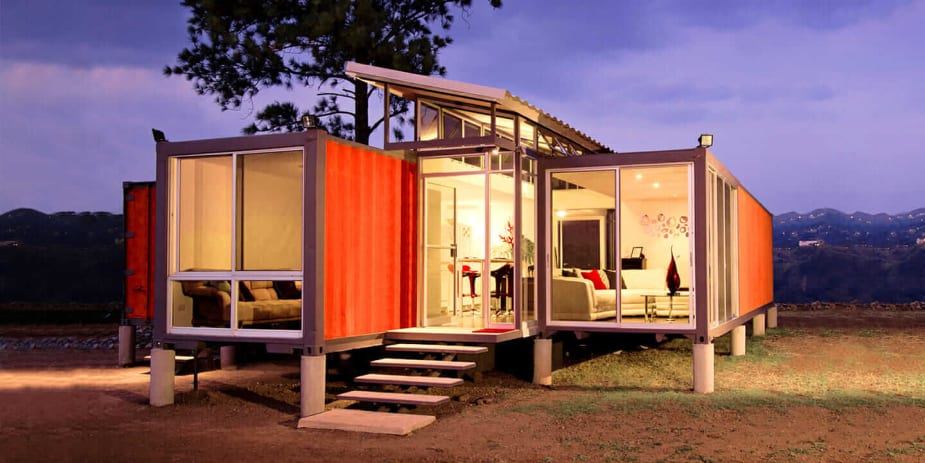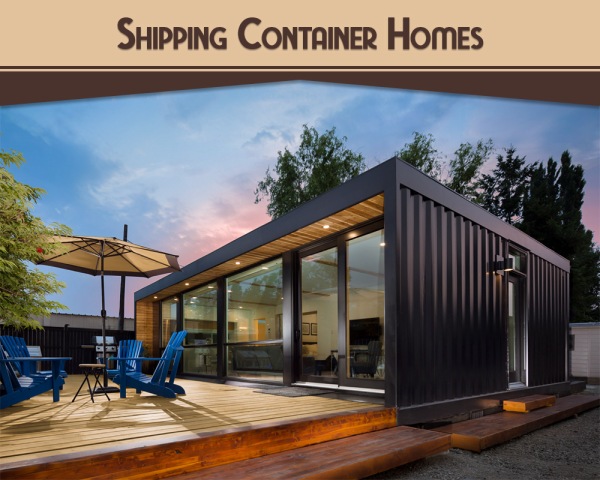This is Anthony Thompson, chief editor and the founder of this site, Tinyhousegarage. I'm a home architect. Basically, I've created this site to help people...Read more
What Is The Function Of Container Home?
Ever wondered what it would be like to live in a home made of shipping containers? Well, container homes have gained popularity for their unique blend of functionality and style. So, what exactly is the function of a container home? Let’s dive in and find out!
Container homes serve a variety of purposes, from primary residences to vacation homes and even commercial spaces. They offer a cost-effective and eco-friendly alternative to traditional housing, while also providing durability and flexibility. With their modular design, container homes can be easily customized and expanded, making them a versatile choice for different needs.
Container homes have various functions that make them a popular housing alternative. These functional homes can be used as eco-friendly dwellings, vacation rentals, extensions to existing homes, and even as commercial spaces. With their customizable designs and affordability, container homes offer versatility and sustainability. They can be easily transported and provide efficient use of space. Container homes are also durable and can withstand extreme weather conditions. Explore the many functions of container homes and discover a unique and practical housing solution.
Chi sono i migranti e perché lasciano il loro paese d’origine?
- I migranti sono persone che lasciano il loro paese d’origine in cerca di una vita migliore o per sfuggire a situazioni di conflitto o persecuzione.
- Le ragioni principali per cui le persone lasciano il loro paese includono la ricerca di lavoro migliore e opportunità economiche, la fuga da conflitti armati, la persecuzione politica o religiosa e la ricerca di protezione e sicurezza per sé e per la propria famiglia.
- Spesso i migranti sono spinti a lasciare il loro paese a causa di condizioni di vita difficili, mancanza di opportunità e di servizi di base come l’istruzione e l’assistenza sanitaria.
- Il processo di migrazione può essere pericoloso e difficile, con i migranti che affrontano sfide come la traversata di deserti o il viaggio in barca attraverso mari pericolosi.
- È importante garantire la protezione dei diritti umani dei migranti e fornire loro sostegno e assistenza nei paesi di origine, di transito e di destinazione.

What is the Function of Container Homes?
Container homes have gained popularity in recent years as a cost-effective and sustainable housing option. These homes are constructed using repurposed shipping containers, providing a unique and innovative solution to the housing crisis. But, what exactly is the function of container homes? In this article, we will delve into the various functions and benefits of container homes, exploring why they have become a popular choice for many individuals and communities.
1. Affordable Housing
One of the primary functions of container homes is to provide affordable housing options. The use of repurposed shipping containers significantly reduces the cost of construction materials. Additionally, the modular nature of these homes allows for easy expansion or customization, giving homeowners the flexibility they need at an affordable price. Container homes offer an alternative to traditional housing that is often cost-prohibitive for many individuals and families.
Furthermore, container homes can be an excellent option for those looking to downsize or live a minimalist lifestyle. These homes offer compact living spaces that are well-designed and utilize every inch of available space efficiently. With the rising costs of housing and the need for affordable options, container homes can provide a solution that meets the needs of a diverse range of people.
It is worth noting that container homes often require additional investment in insulation, plumbing, and electricity to make them comfortable and functional. However, even with these added costs, container homes still offer a more affordable housing option compared to traditional houses.
2. Sustainability and Environmental Consciousness
Another crucial function of container homes is their sustainable and eco-friendly nature. By repurposing shipping containers that would otherwise be discarded, container homes contribute to reducing waste and minimize the demand for new construction materials. This recycling and reimagining of materials help reduce the carbon footprint associated with traditional housing construction.
Container homes can also incorporate various sustainable features, such as solar panels, rainwater collection systems, and energy-efficient insulation. These eco-friendly additions further enhance the sustainability of container homes, reducing their reliance on external resources and minimizing their impact on the environment.
Moreover, container homes can be relocated easily, allowing individuals or communities to move with minimal disruption. This flexibility promotes sustainable living and the efficient use of land resources, particularly in areas where land availability is limited. Container homes serve as a reminder that sustainable and functional housing does not have to come at the expense of the environment.
3. Versatility and Adaptability
Container homes are incredibly versatile and can serve various functions and purposes. They can be used not only as residential spaces but also as offices, studios, workshops, or even pop-up stores. Due to their modular design, container homes can be stacked or arranged side by side to create larger living or working spaces, making them ideal for individuals seeking adaptable and flexible housing solutions.
Additionally, container homes can be customized to suit the unique needs and preferences of their owners. The interior layout, color schemes, and finishes can all be tailored to create a personalized and comfortable living space. The adaptable nature of container homes extends beyond their physical structure, allowing individuals to create homes that reflect their personalities and lifestyles.
Furthermore, container homes can be designed to incorporate outdoor living spaces, such as rooftop gardens, balconies, or patios, maximizing the available space and creating a connection with nature. The versatility and adaptability of container homes make them an ideal choice for individuals who value flexibility and appreciate the opportunity to create a space that meets their specific needs.
4. Durability and Strength
Shipping containers are designed to withstand harsh weather conditions and the rigors of international transportation. As a result, container homes are incredibly durable and can withstand extreme weather events, including hurricanes and earthquakes. The robustness of container homes provides homeowners with peace of mind, knowing that their homes are built to last.
Moreover, the strength of container homes makes them an excellent choice for building in areas prone to natural disasters. Their ability to withstand external forces and their potential for easy transportation make container homes a viable option for emergency or temporary housing in disaster-stricken regions. This functionality not only provides shelter but also offers a sense of safety and security to those affected by unforeseen circumstances.
Container homes also require minimal maintenance, as the steel structure is resistant to common issues such as rotting, termites, or mold. This low maintenance requirement adds to the overall appeal and functionality of container homes, making them an attractive option for individuals looking for a hassle-free living arrangement.
#More three relevant H2 headings:
Benefits of Container Homes

Frequently Asked Questions
Welcome to our FAQ section on the function of container homes! Here, we’ll answer some common questions regarding the purpose and benefits of these unique dwellings. So, let’s dive in and explore the world of container homes!
1. How are container homes used?
Container homes are versatile and can be used in various ways. Most commonly, they are used as residential dwellings, providing affordable and sustainable housing options. However, they can also be used as offices, classrooms, pop-up shops, and even art installations. Their modular nature allows for easy customization and adaptation to different purposes.
Moreover, container homes are often utilized in emergency situations as temporary shelters. Their durability and ability to withstand harsh conditions make them suitable for disaster relief efforts and humanitarian aid, providing a quick and efficient housing solution.
2. What are the advantages of living in a container home?
Living in a container home offers several advantages. Firstly, they are cost-effective. Containers can be purchased at a lower price compared to traditional building materials. Additionally, their modular design reduces construction time and labor costs.
Container homes are also eco-friendly, as they repurpose discarded shipping containers and reduce the demand for new construction materials. Furthermore, they can be equipped with sustainable features such as solar panels, rainwater harvesting systems, and energy-efficient insulation, minimizing their environmental impact.
3. Are container homes durable and secure?
Absolutely! Shipping containers are built to withstand harsh environments, making them incredibly durable. They are designed to be stacked, transported, and loaded with heavy cargo. This structural strength ensures that container homes are resistant to extreme weather conditions, including storms and earthquakes.
Regarding security, container homes can be enhanced with reinforced doors, windows, and lock systems to meet safety requirements. When properly designed and installed, they can offer a secure living space, providing the same level of safety as traditional homes.
4. Can container homes be customized and expanded?
Yes, container homes are highly customizable and can be expanded to suit specific needs. Depending on the size and layout, containers can be combined or stacked horizontally or vertically. This allows for the creation of larger living spaces or the addition of extra rooms.
Interior and exterior customizations are also possible. Walls can be cut and removed to create open-floor plans, windows can be installed for natural light, and insulation can be added for comfort. With the right design and planning, container homes can be transformed into unique and functional living spaces.
5. What about the infrastructure of container homes?
Container homes require similar infrastructure to conventional houses. They need access to electricity, water, and sewage systems. However, the installation of these utilities may vary depending on the location and design of the container home.
For example, solar panels can be installed to generate electricity, and rainwater harvesting systems can be used to conserve water. Additionally, composting toilets or greywater recycling systems can be implemented for more sustainable waste management. With proper planning and professional assistance, container homes can be fully equipped with the necessary infrastructure.
Why shipping container homes are overrated
Summary
Container homes are a type of housing made from repurposed shipping containers. They are eco-friendly, affordable, and can be customized to fit different needs. These homes are not only durable but also provide a unique and modern living space. With their modular design, container homes offer flexibility and can be easily transported and assembled. They are a practical and sustainable solution for those looking for a compact yet comfortable dwelling.
Container homes provide an alternative to traditional housing and can be used as permanent residences, vacation homes, or even offices. These homes can be designed to be energy efficient, with features like insulation, solar panels, and rainwater harvesting. Container homes also allow for creativity in design, enabling homeowners to make the space their own. Whether it’s a minimalist style or a cozy vibe, container homes offer endless possibilities for creating a personal sanctuary. So consider a container home for your next housing project and embrace a new way of living.

This is Anthony Thompson, chief editor and the founder of this site, Tinyhousegarage. I'm a home architect. Basically, I've created this site to help people build tiny houses with a limited budget and land space or people who are homeless. As a home architect, I became very disheartened when I saw homeless people around me, which influenced me to create this site to help people build beautiful tiny houses.
More Posts
